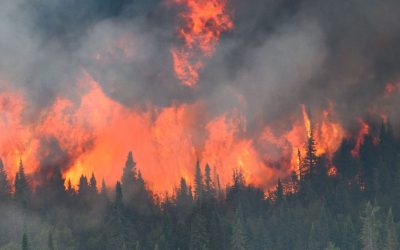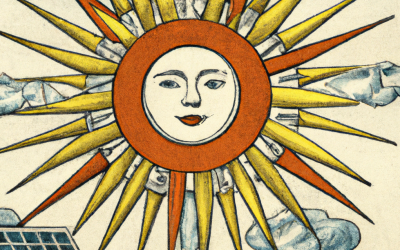1. Climate Science encompasses many basic disciplines from Science-in-general. Few people have a total grasp of all factors that influence the planet’s climate. As a result, specialists sometimes don’t see the forest for the trees.
2. Climate has been changing since the earliest geologic times. There are a number of natural cyclic events that are responsible for Climate Change on a variety of time scales. Approximately from long to short the main ones are:
- Tectonic influences which slowly rearrange the distribution of continents and oceans;
- Orbital cycles (orbit shape, axis inclination, axis wobble), the main drivers of the glaciation events;
- Oceanographic changes (thermo-haline heat transport, ocean current distribution and oceanic oscillations);
- Solar variations, due to the star’s electromagnetic activity, long cycles of changes in intensity and number of the 11 year sun spot cycles, determining solar radiation received on earth;
- Cosmic ray cycles of galactic origin, providing varying amounts of condensation nuclei, thereby affecting cloud cover;
- Volcanic eruptions producing vast amounts of particulates.
And probably some more.
3. The “Greenhouse” affects the temperature on the earth surface. Without it we would be at –18 o C average. 95% of it is water vapour and clouds. About 3% of GHG is CO2 , or 0.03% of the atmosphere. Of the approximately 50,000 GigaTons of carbon on the planet, 40,000 GT is in the oceans and only 750 GT in the atmosphere. (It has been as much as 20 times higher in the geologic past.) The human-caused circulation (fossil fuel burning etc) exchanges about 6 GT per year, part of which is absorbed by the oceans. Any additions caused by human activity pale in the light of the massive natural fluctuations.
4. The complexity of influences working on the earth’ climate, and the interactions (feedbacks) between those factors make any computer projections hazardous. Water vapour, a major factor in any warming and cooling, is almost impossible to include in the models. Backward compatibility of the models has repeatedly failed.
5. Since the mid 18th century low temperatures of the Little Ice Age, a gradual warming of 0.6oC/100 years has taken place. That rate has not changed appreciably. What has changed is the heat generated by cities, airports, industrial areas etc (Urban Heat Island Effect). It has increased exponentially, measurable particularly in those places where observation stations are normally located. Few “normal” stations are located in deserts or on oceans. Satellite and radiosonde data confirm a rate which is much lower than the one predicted by the IPCC computer simulations. There is no excessive global warming outside urban areas. There is natural global warming, probably in the range of one degree per century. (It must be noted that the “Global Average Temperature” is not a measured entity, but a statistical creation, subject to much disagreement. One could hold that the level of inaccuracy surpasses the “anomalies” observed or predicted).
6. Carbon dioxide levels from the past do not correlate well with temperatures:
- In the far geologic past there seems to be little connection.
- During the glacial times (four glaciation periods) CO2 and temperature seem to march in lockstep, but close examination reveals that the temperature moves first and the carbon dioxide follows. There are explanations for that, e.g. expelling gases from warming ocean surface layers.
- Recent isotope work with Pleistocene sediments on the West Coast and elsewhere indicates also strongly that temperature increases and decreases are related to solar cycles and that the carbon dioxide levels follow.
- In the very recent past, CO2 levels increased sharply after the Second World War, while the overall temperature dropped between 1940 and 1975, causing the cooling scare of the late seventies. (Notice that most pro-Kyoto graphs start in 1975.)
7. Extreme weather events (hurricanes/cyclones/typhoons) run in approximately 25 year cycles and are related to non-climate change events such as the separate ocean oscillation patterns. El Niño/Niña is an example. Predictions of sea level rise, increasing storms, droughts, melting ice caps and what all, are scary scenarios based on computer projections, not on observed data. E.g. Sea levels in the Pacific (Tuvalu records) and the Indian Ocean (Maldives) have been examined. They are not rising.


